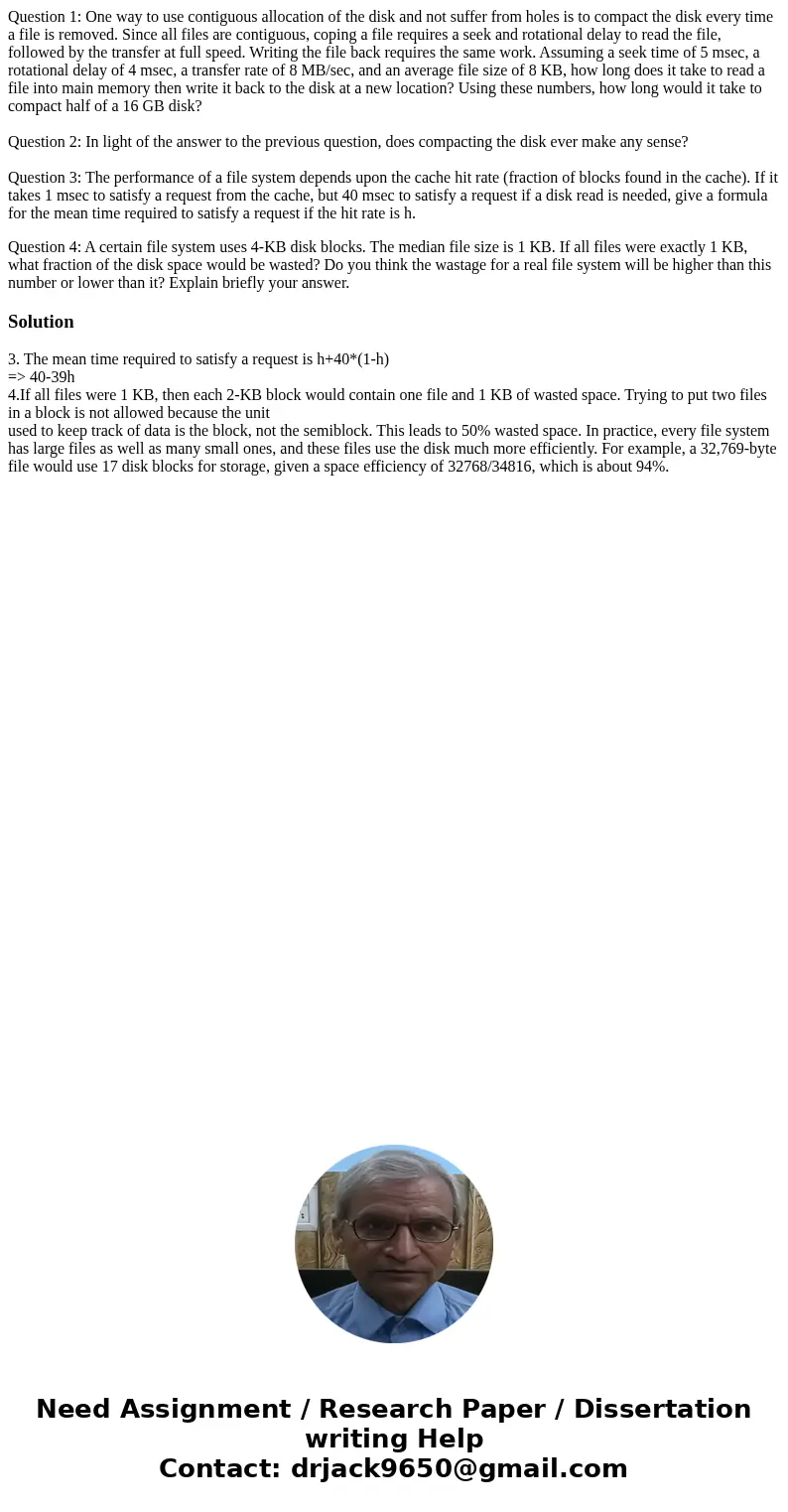Question 1 One way to use contiguous allocation of the disk
Question 1: One way to use contiguous allocation of the disk and not suffer from holes is to compact the disk every time a file is removed. Since all files are contiguous, coping a file requires a seek and rotational delay to read the file, followed by the transfer at full speed. Writing the file back requires the same work. Assuming a seek time of 5 msec, a rotational delay of 4 msec, a transfer rate of 8 MB/sec, and an average file size of 8 KB, how long does it take to read a file into main memory then write it back to the disk at a new location? Using these numbers, how long would it take to compact half of a 16 GB disk?
Question 2: In light of the answer to the previous question, does compacting the disk ever make any sense?
Question 3: The performance of a file system depends upon the cache hit rate (fraction of blocks found in the cache). If it takes 1 msec to satisfy a request from the cache, but 40 msec to satisfy a request if a disk read is needed, give a formula for the mean time required to satisfy a request if the hit rate is h.
Question 4: A certain file system uses 4-KB disk blocks. The median file size is 1 KB. If all files were exactly 1 KB, what fraction of the disk space would be wasted? Do you think the wastage for a real file system will be higher than this number or lower than it? Explain briefly your answer.
Solution
3. The mean time required to satisfy a request is h+40*(1-h)
=> 40-39h
4.If all files were 1 KB, then each 2-KB block would contain one file and 1 KB of wasted space. Trying to put two files in a block is not allowed because the unit
used to keep track of data is the block, not the semiblock. This leads to 50% wasted space. In practice, every file system has large files as well as many small ones, and these files use the disk much more efficiently. For example, a 32,769-byte file would use 17 disk blocks for storage, given a space efficiency of 32768/34816, which is about 94%.

 Homework Sourse
Homework Sourse